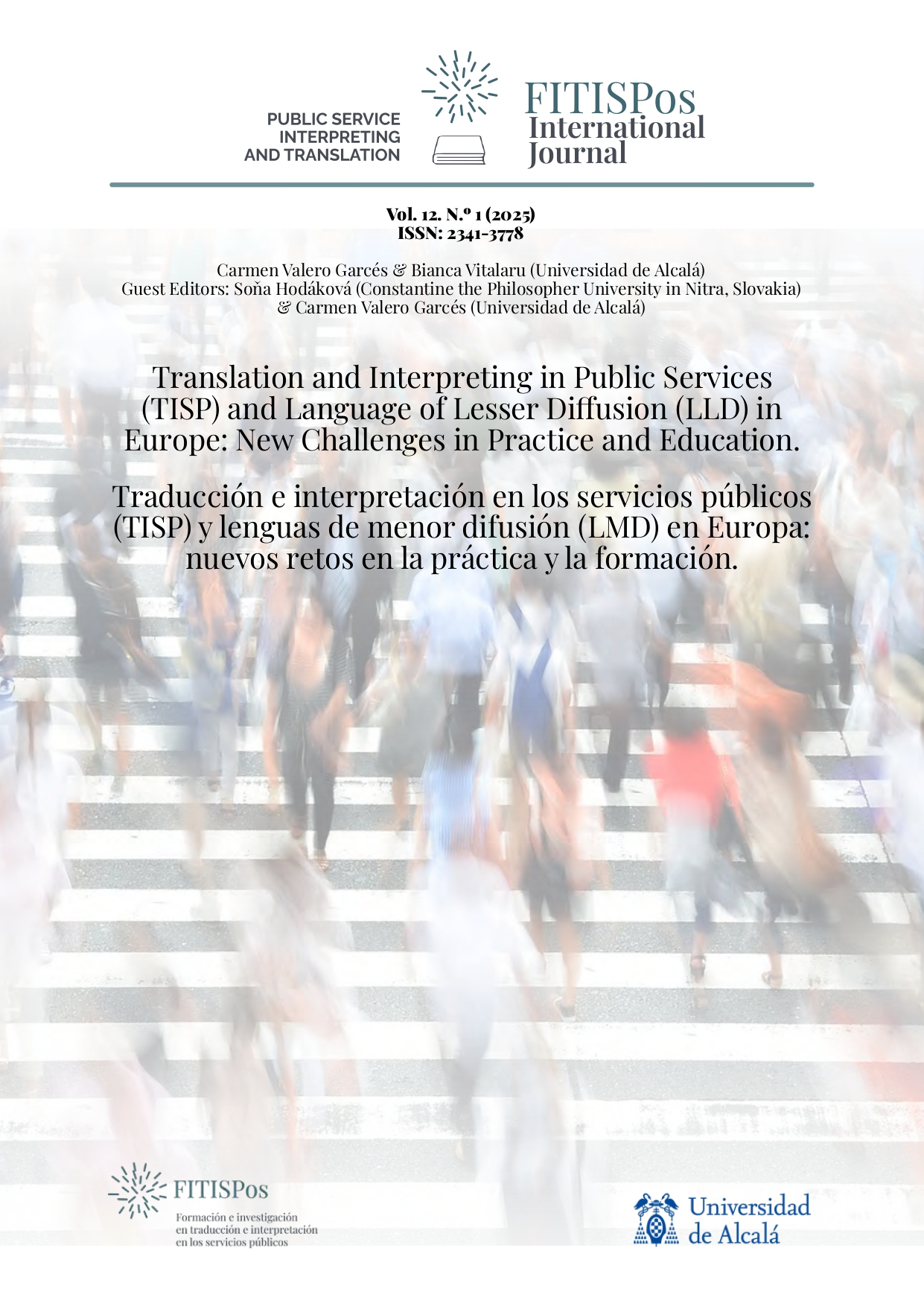‘Unstated’ mediation: on the ethical aspects of nonprofessional interpreting and translation, edited by Georgios Floros, Konstantinos Kritsis, and Rafaella Athanasiadi
DOI:
https://doi.org/10.37536/FITISPos-IJ.2025.12.1.423Keywords:
Interpretación no profesional, Ética, Traducción e interpretaciónAbstract
This volume presents some of the papers and talks given at the 6th International Conference on Non-Professional Interpreting and Translation (NPIT6), which was organized by the Department of English Studies at the University of Cyprus in May 2023. The contributions provide a good overview of the variety of topics presented at the conference. More importantly, they also represent both the academia and the industry, which is crucial when discussing the understanding of the wider notion of professionalism in the light of Non-Professional Interpreting and Translation (NPIT). Not every multilingual communicative need can be covered by professionals. For example, there can be lack of professionals for a rare language combination, the occasion may be an emergency, the communicative need may be too trivial or unplanned to call in a professional, or a professional may simply not be affordable. Therefore, people attempt to bridge communicative gaps on their own every single day, despite not being trained for this activity, often despite the availability of professionals, and sometimes precisely because of their unavailability. They attempt to communicate because they must, given that our world experiences massive migration flows, our economies now work multilingually at various levels, and natural or human-inflicted disasters require swift reaction and ad hoc coordination. People attempt such bridging with all the resources they have available, even if these resources might be nothing more than the sheer necessity, the desire to survive, or some basic knowledge of a foreign language. Such mediation often tends to be overlooked, thus ‘unstated’, though it actually hides a series of important ethical concerns. When translation and interpreting take place as ‘unstated’ forms of mediation, one tends to investigate NPIT as an opposite pole to professional mediation, perhaps a problematic, or even renegade one. Seen from an ethical perspective, this pole could perhaps be a complementary one to professional mediation. Such contemplations would eventually challenge the very notion of professionalism, given that NPIT happens almost naturally, almost in the same way language occurs. The important questions are whether there are boundaries to it, whether there are cases in which it should be avoided, who should be doing it and in what circumstances, what can professionals and researchers learn from it, and what can be done to support it when it seems worth the effort. Delving into the ethical aspects of NPIT would provide perhaps one of the most inclusive categories which can act as a generic framework for investigating the forms it can take and its repercussions for all ‘sides’ involved.
Downloads
Downloads
Published
Issue
Section
License
Copyright (c) 2025 Ana Villoslada

This work is licensed under a Creative Commons Attribution-NonCommercial 4.0 International License.
Authors who publish with this journal agree to the following terms:
a. Authors retain copyright and guaranteeing the journal the right to be the first publication of the work as licensed under a Creative Commons Attribution License that allows others to share the work with an acknowledgment of the work's authorship and initial publication in this journal.
b. Authors can set separate additional agreements for non-exclusive distribution of the version of the work published in the journal (eg, place it in an institutional repository or publish it in a book), with an acknowledgment of its initial publication in this journal.
c. It allows and encourages authors to disseminate their work electronically (eg, in institutional repositories or on their own website) prior to and during the submission process, as it can lead to productive exchanges, as well as to a subpoena more early and most of the published works (See The Effect of Open Access) (in English).



